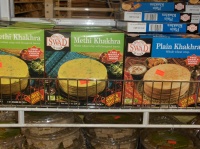A Pluralistic Paradise?From The Peopling of New York CityIf you have heard anything about Jackson Heights, it's most likely that the neighborhood is one of the most diverse in Queens. You are probably aware of the great food, courtesy of the many ethnic restaurants in the area. You know that a walk through its streets is like a walk around the world due to the multiple languages spoken. Nevertheless, what does this really tell us about a neighborhood? Does the neighborhood's diversity extend beyond the mere presence of its people, who bring all sorts of foods, languages, and cultures to the neighborhood? If not, then you certainly can define Jackson Heights as an incredibly diverse neighborhood. However, if you factor in politics and economics, not just culture alone, then you will find that the diversity in Jackson Heights may actually be in crisis. Through this website, we will demonstrate that there is more to the Jackson Heights' diversity than what simply meets the eye. We will examine who is included in this definition of diversity, who is excluded, and how these groups act in this context. We will look beyond a basic survey of the neighborhood's culture, and delve into the realm of the economic and political facets of the neighborhood. Since real estate agencies advertise the neighborhoods as a place of thriving cultural diversity, we examine how this representation shapes the economic realities and power relationships in Jackson Heights. We additionally discuss the past and present real estate marketing strategies, and whether these strategies are beneficial or harmful to the diversity of the neighborhood. In this section, we briefly discuss Jackson Heights beyond conventional wisdom. In subsequent sections, we trace the origins of Jackson Heights' diversity. Later, we explore the neighborhood's gentrification, which, we believe, poses a threat to its diversity. Finally, we anticipate the neighborhood's future. But first, let us begin by describing present-day Jackson Heights. If you asked someone for the 411 on Jackson Heights, he or she would probably focus on the ethnic diversity, the food and the various ethnic haunts. However, we explore who actually is in Jackson Heights, and where the different cultural and ethnic groups have 'set up shop.' Then, imagine that you are new to New York City. With a new job on Wall Street, you need to find a place to call home. You are thinking about buying a co-op apartment in Brooklyn because Manhattan is so expensive. Unfortunately, Brooklyn isn't all that cheap these days either. A few friends mention Jackson Heights. Ordinarily, the notion of moving to Queens might not cross your mind. However, you consider its ethnic diversity as marketed to young, urban professionals, like yourself, warranting at least a second look. When you inquire about the neighborhood, how will real estate agents market Jackson Heights to you? However, it is also essential to note the complexities of Jackson Heights' diversity. Although it is a demographically diverse neighborhood, this does not mean that there is much interaction between the different ethnic groups. This page introduces the idea that the nature of Jackson Heights' diversity is more complex than commonly portrayed. While there are many ethnic groups found within the neighborhood, we demonstrate that they are socially isolated from the one another.
|

